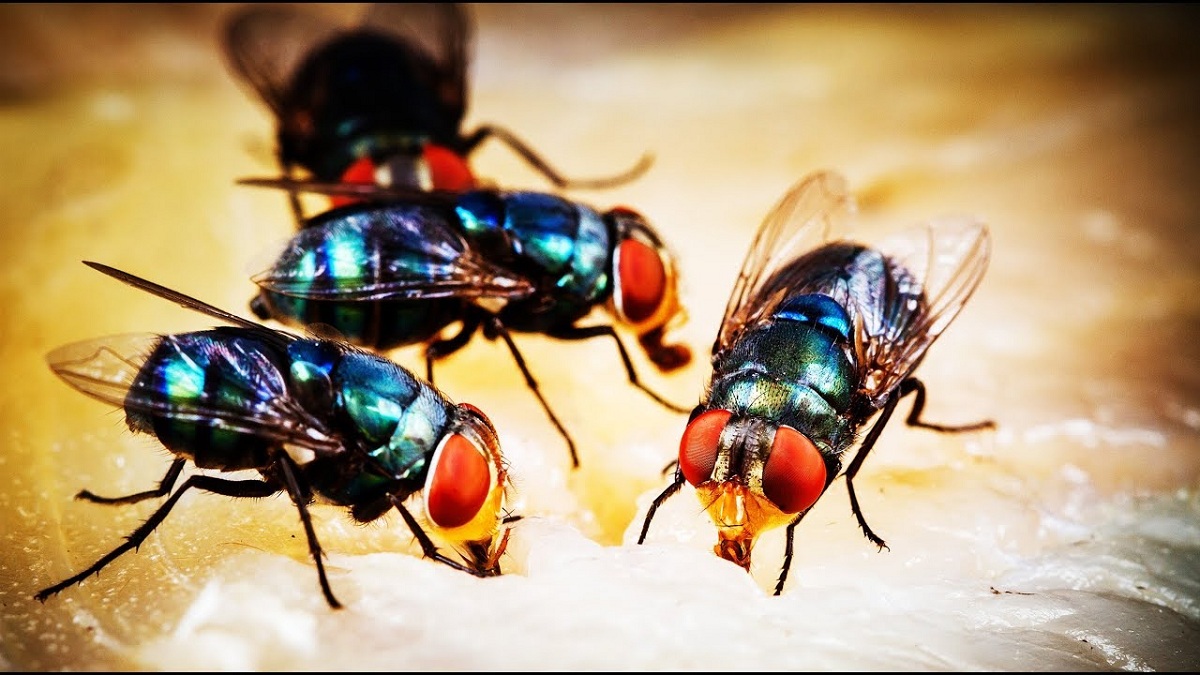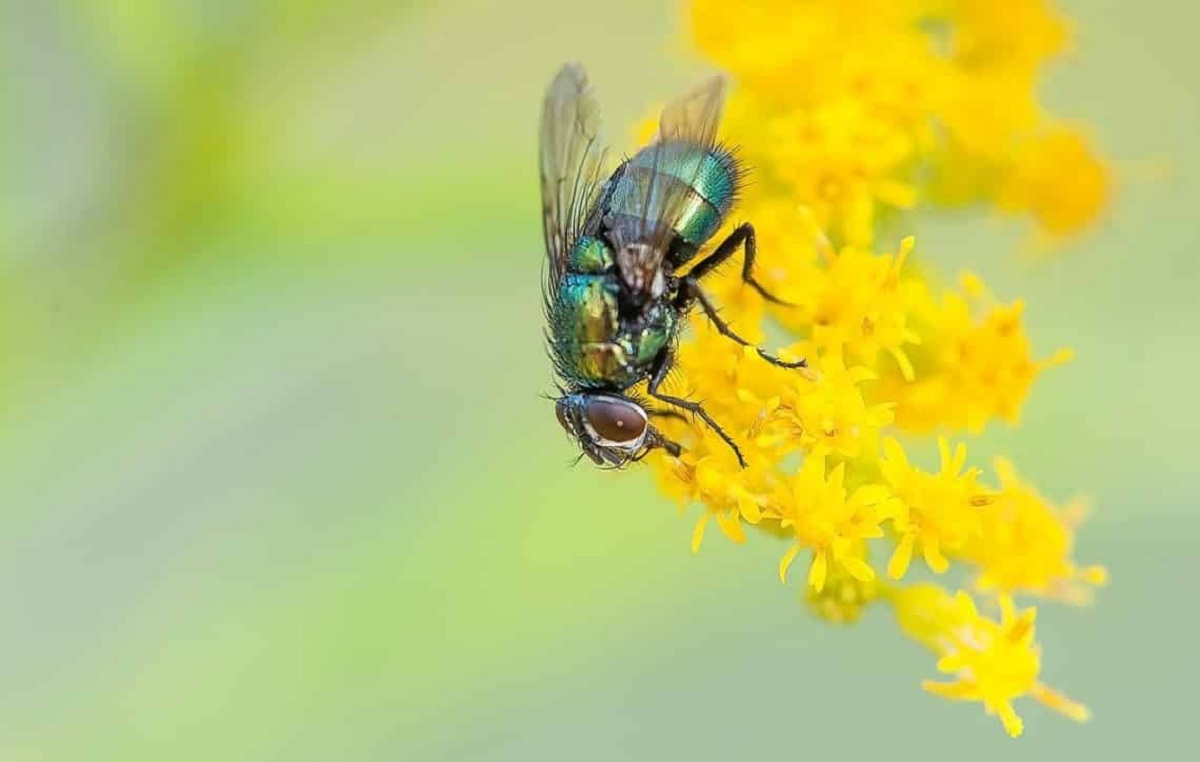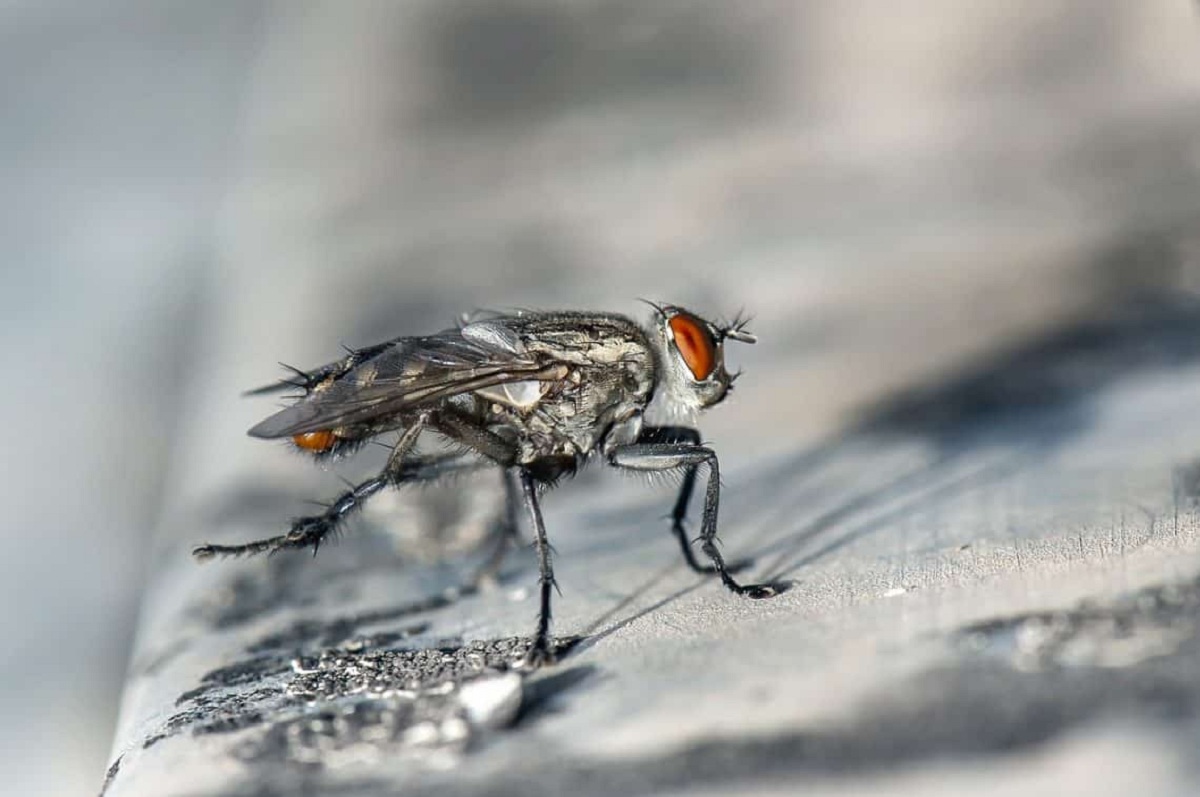
Surely some or many times we have thought that the fly is useless except to annoy. And it is that when the good weather arrives with the stage of spring and summer we suffer the continued presence of this annoying little insect. However, do not forget the fly function in ecosystems and its importance to many other species. It is normal to see that flies try to land on our food and move quickly to escape our attempts to kill them. Although we think that they are not necessary animals, it is not recommended to harm them since they have an important function.
In this article we are going to tell you what the function of the fly ecosystems and the importance they have.
Key features

Let's first talk about some characteristics of flies. If you have ever seen a fly in its entirety, you will see that they have eyes made up of thousands of individual facets that are sensitive to light. Thus, allows them to escape by flying in the face of any kind of danger. Their limbs are articulated 3 times and it allows them to rub their mouth and eyes in that way so characteristic of these insects. Its body is differentiated into different tagmas that are the head, thorax and abdomen.
They are one of the few insects that do not have antennae but have two so-called wings. The mouth is ready to suck, lick or pierce but cannot bite or chew. There are some species of flies that can bite. Only our country there are more than 50.000 identified species which suggests that there are countless species of flies around the world. As you know, the new species appear from the different crosses between species that take place in natural ecosystems.
Flies usually have a very short but active life span. Between the months of March and August we find the period where they are capable of reproducing by millions and millions of individuals. We must know that during the rest of the year they do not disappear or hibernate, but rather they slow down their life cycles while they wait for the high temperatures to condition them to an ideal life to be able to reproduce at a higher speed.
In most species of flies, its maturity comes between 15 and 25 days. Under optimal conditions, a fly can live up to 60 days. During this time they can fly, feed and reproduce since it is their most adult stage. Prior to the stage in which it can fly, it has had to go through other stages such as eggs, larvae or other stages depending on the species we are treating.
Fly function in ecosystems

We are going to point out what the function of the fly in ecosystems. And it is that these insects have great importance beyond what we believe. In summary we can say that these insects They are pollinators, decomposers of organic matter, control pests and serve as food for other insectivorous animals. The function of the fly in ecosystems is divided into all these aspects.
Although it seems that they do nothing more than fly and sneak into our food, they are beneficial for all of us since they have a pollinating job. It can also be used to control some pests, so it can provide us with great benefits for natural spaces, gardens and agriculture. Another aspect in which the fly has helped humans is the world of genetics. Thanks to the rapid life cycle of these insects, Mendel was able to demonstrate theories that have revolutionized the world of science.
We are going to see another important aspect of the fly's function in ecosystems.
Pollinating insects
The most main function of the fly and the ecosystems is pollination. As with other insects such as bees, flies are a means of transport for the pollen of some plant species. This pollen sticks to their legs and to other parts of the body and deposits them on other flowers when they land on them.. This journey between flowers results in the pollination of a large number of plant species.
It must be taken into account that flies do not feed directly on pollen like other species of insects, so bees have part of this much more relevant work.
Decomposers of organic matter

We know that the food web is quite complex and there are different levels depending on the function of each organism in an ecosystem. Flies have the role of decomposing animals of organic matter. This means that during the larval stage they are saprophagous animals. This means that the nutrition of flies when they are larvae is mainly supplied through the residues of other organisms or living beings, whether they are vegetable or animal residues. For example, fly larvae feed on the carcasses of deceased animals, the rest of the feces of other animals, remains of dead leaves, etc.
They also serve as food for other living beings whose diet is insectivorous. This makes it have a vital function in the natural balance of ecosystems. They are vectors of microorganisms, so they can spread parasites and diseases to other animals. This function It can be harmful to humans since it can also transmit diseases to dogs and horses, animals close to human beings.
Fly function in ecosystems: pest control
A very important function of the fly in ecosystems is pest control. These insects are responsible for regulating some of the animal populations that are harmful to plants and animals. Some of these animals are mites, aphids, bed bugs, etc. Also keep in mind that flies can become pests under certain conditions.
Insectivores are those that eat insects. The large number of flies and other insects belonging to the Diptera group are some of the main food sources of these animals.
I hope that with this information you can learn about the role of the fly in ecosystems and the importance they have.